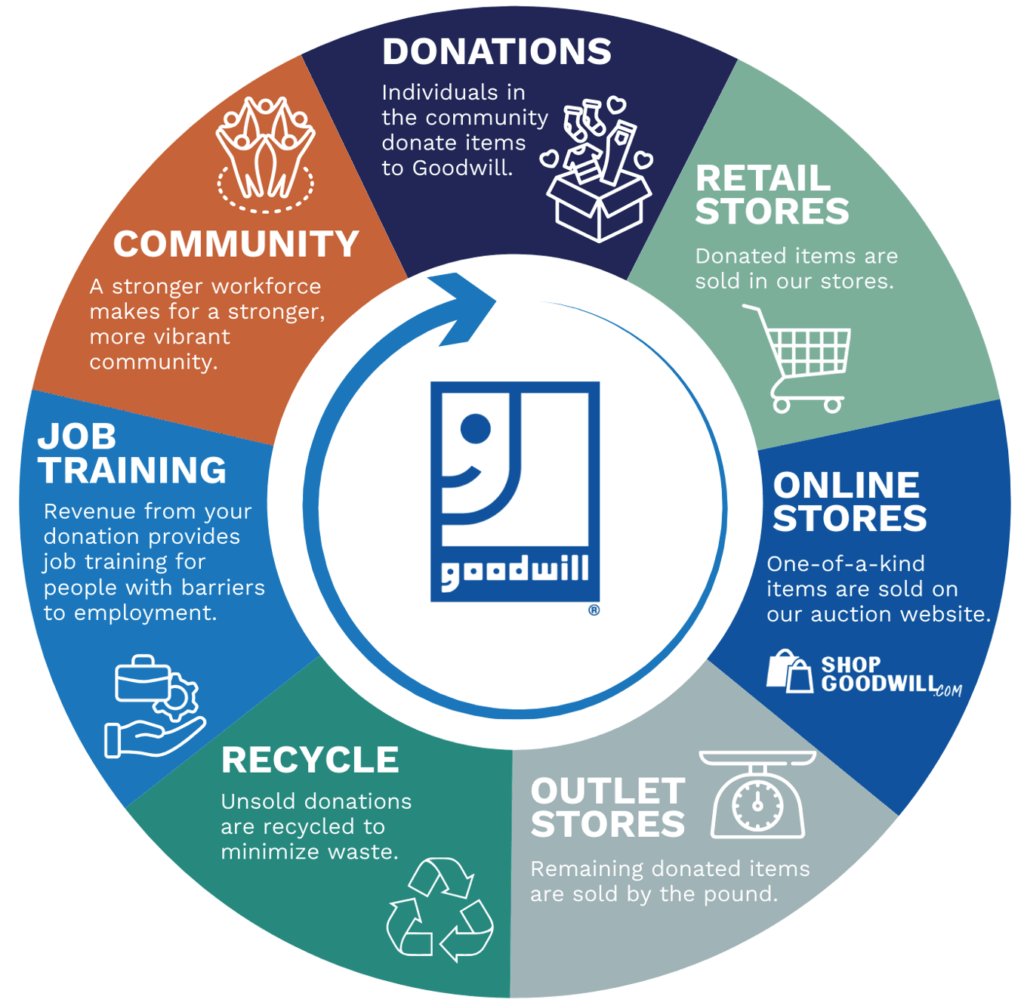Sustainability
Sustainability is central to Goodwill’s mission. We extend the life of usable items, reduce landfill waste, and decrease reliance on new material production, thereby significantly impacting communities. Every year, Goodwill organizations across the nation support millions of people, delivering positive social and environmental outcomes. Moreover, as a key player in the modern reuse economy, we focus on reusing and recycling secondhand materials. Through these efforts, Goodwill not only provides essential services but also promotes environmental stewardship and community well-being, ensuring a more sustainable future for everyone.
In 2024, we diverted
pounds from the landfill.
Life Cycle of a Donation
You donate items to Goodwill. We accept everything from clothing and accessories to housewares, furniture and cars. Our conveniently located stores are staffed with friendly Goodwill employees who will issue a donation receipt, upon request for tax purposes.
Your donation is processed for resale and sold by Goodwill. Proceeds from the sale of your donation go towards our job training and placement programs. More specifically, $.90 of every $1 goes towards our mission!
Goodwill participants secure meaningful employment. Goodwill programs assist individuals with barriers to employment develop independence and employability skills, and become contributing members of our local workforce.


Industry Numbers
It takes more than 5,000 gallons of water to produce the amount of cotton needed to produce one t-shirt and a pair of jeans. World Wildlife Fund
More than 70 million trees are logged every year to create textile fabric. Forbes/Zady
Nearly 70 million barrels of oil are used each year to make polyester. However, polyester takes more than 200 years to decompose. Forbes/Zady
The Environmental Protection Agency estimates that the average person throws away 81 pounds of clothing per year. That adds up to 3.8 billion pounds of unnecessary waste added to our landfills. EPA
